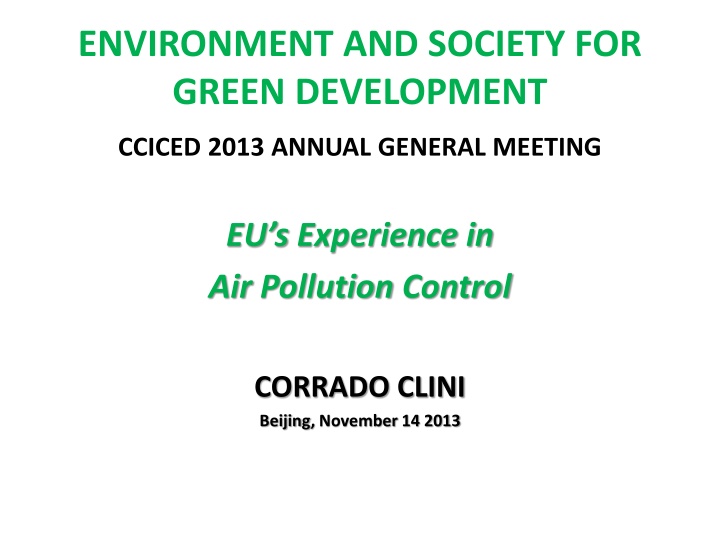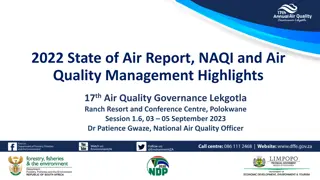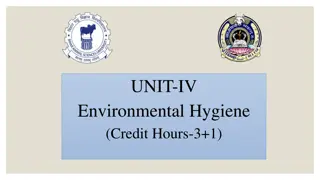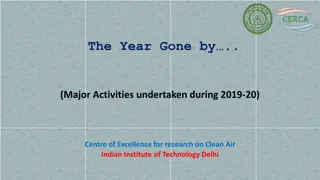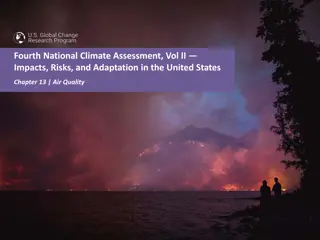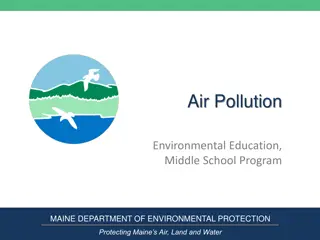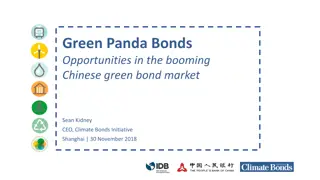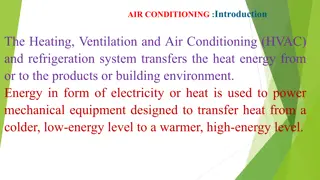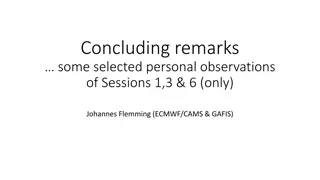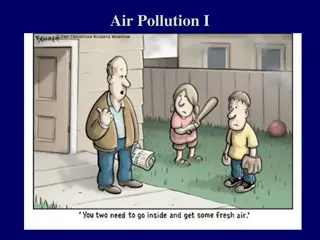EU Air Quality Legislation for Green Development
The European Union has made significant progress in controlling air pollution through extensive legislation focusing on health-based standards and emission reduction measures. Key directives such as the EU Air Quality Framework, Ambient Air Quality Legislation, and Industrial Emissions Directive play crucial roles in improving air quality and addressing pollution from various sources, including industrial activities and road traffic emissions. The report highlights the EU's commitment to environmental protection and sustainable development.
Download Presentation

Please find below an Image/Link to download the presentation.
The content on the website is provided AS IS for your information and personal use only. It may not be sold, licensed, or shared on other websites without obtaining consent from the author.If you encounter any issues during the download, it is possible that the publisher has removed the file from their server.
You are allowed to download the files provided on this website for personal or commercial use, subject to the condition that they are used lawfully. All files are the property of their respective owners.
The content on the website is provided AS IS for your information and personal use only. It may not be sold, licensed, or shared on other websites without obtaining consent from the author.
E N D
Presentation Transcript
ENVIRONMENT AND SOCIETY FOR GREEN DEVELOPMENT CCICED 2013 ANNUAL GENERAL MEETING EU s Experience in Air Pollution Control CORRADO CLINI Beijing, November 14 2013
EU AIR QUALITY FRAMEWORK Air pollution has been one of Europe's main political concerns since the late 1970s. The European Union has developed an extensive body of legislation which establishes health based standards and objectives for a number of pollutants in air. The legislative measures have been designed to improve air quality , by tackling emissions from various sectors. An assessment of the impact of these measures in the last 20 years, compared with a non-policy scenario, estimated that significant reductions in emissions occurred especially for sulfur dioxide (- 90%), carbon monoxide (-80%), non- methane volatile organic compounds (-68%), nitrogen oxides (-40%) and PM2.5 (-60%)
AMBIENT AIR AIR QUALITY LEGISLATION The Directive 2008/50/EC on ambient air quality and cleaner air for Europe includes the merging of most of existing legislation into a single directive with no change to existing air quality objectives, as well as the new air quality objectives for PM2.5 (fine particles) including the limit value and exposure reduction target NATIONAL EMISSION CEILINGS DIRECTIVE The National Emissions Ceiling Directive (Directive 2001/81/EC - NEC Directive), adopted on 23 October 2001, sets upper limits for each Member State for the total emissions in 2010 of the four main pollutants, SO2, NOx, VOC and NH3. responsible for acidification, eutrophication and ground-level O3pollution.
INDUSTRIAL EMISSIONS DIRECTIVE 2010/75/EU ON INDUSTRIAL EMISSIONS (INTEGRATED POLLUTION PREVENTION AND CONTROL) The Directive cover industrial activities with a major pollution potential (energy industries, production and processing of metals, mineral industry, management, rearing of animals, etc.). Any industrial installation must Techniques (BAT), according to the European Best Available Techniques Reference Document (BREFs) containing the emission levels associated with the BAT The permit must provide for the necessary measures to ensure compliance with the BREF. chemical industry, waste use the Best Available
AIR QUALITY REPORT 2013 EUROPEAN ENVIRONMENTAL AGENCY In Europe, emissions of many air pollutants have decreased substantially over the past decades, resulting in improved air quality across the region. However, air pollutant concentrations are still too high, and air quality problems persist. A significant proportion of Europe s population live in areas, especially cities, where exceedances of air quality standards occur: ozone, nitrogen dioxide and particulate matter (PM) pollution pose serious health risks. Several countries have exceeded one or more of their 2010 NEC emission limits for four important air pollutants.
Review of evidence on health aspects of air pollution WORLD HEALTH ORGANIZATION EUROPEAN REGION - 2013 More than 80% of the population in the WHO Europe (including the European Union, EU) lives in cities with levels of PM exceeding WHO Air Quality Guidelines. Only a slightly decreasing trend in average concentrations has been observed in countries in the EU over the last decade. Since even at relatively low concentrations the burden of air pollution on health is significant, effective management of air quality that aims to achieve WHO Air Quality Guidelines levels is necessary to reduce health risks to a minimum. There is no evidence of a safe level of exposure or a threshold below which no adverse health effects occur. Exposure to air pollutants is largely beyond the control of individuals and requires action by public authorities at the national, regional and international levels.
2013 EU YEAR OF AIR Janez Poto nik, EU Commissioner for the Environment Air pollution is bad for our health. It reduces human life expectancy by more than 8 months on average and by more than two years in the most polluted cities and regions. Current EU standards for ambient air quality are weaker than those recommended by WHO, which are intended to minimize the health effects of air pollutants. For fine particles (PM2.5), one of the pollutants with the highest impact on people s health, the maximum concentration allowed is 25 g/m3, currently 2,5 times weaker than what the WHO recommends. Everyone accepted the need for a renewed and comprehensive air quality policy, to be launched in 2013 at the latest, and it was agreed that this wider review should also include a revision of the NEC Directive .
EUROPEANS CALL FOR STRONGER EU AIR QUALITY POLICY According to the latest Europeans towards Air Quality a majority (56 %) of Europeans believe that air quality has deteriorated in the last 10 years. Almost 79 % believe that the EU should propose additional measures to address air pollution. The survey reveals widespread dissatisfaction with actions currently being taken to address air quality problems, with 72% considering themselves unhappy with efforts by public authorities to improve air quality When asked about the most effective way to tackle air pollution, 43 % suggest stricter emission controls on industry and energy production. Emissions from vehicles (96 %), industry (92 %) and international transport (86 %) are considered to have the biggest influence on air pollution EUROBAROMETER research Attitudes of
THE CHALLENGE OF PM The epidemiological evidence shows adverse effects of particles after both short-term and long-term exposures. Given these findings, not only may the WHO guidelines for PM need to be revised, but there is also a need to re- evaluate and lower the indicative Stage 2 limit value for PM2.5 of 20 g/m3 annual average in the EU Directive due to be met in 2020. It is evident that not all the components of the PM mixture are equally toxic . But in a real everyday situation, the population is exposed to a complex mixture of hundreds of particle-bound and gaseous components. By means of epidemiological studies, it is difficult to allocate an observed effect to a single component , including Black Carbon (BC) generated by incomplete combustion of fossil fuels. However, the reduction in exposure to PM2.5 containing BC and other combustion-related PM material for which BC is an indirect indicator should lead to a reduction in the health effects associated with PM ( WHO Europe)
Reducing Black Carbon to address Health Protection and Climate Change In 2002-2003 J.Hansen, Y.Luo observations and climate models results, concluded in that the black carbon heats the air, precipitation, and leads to larger surface cooling than if the aerosols were sulfates. They found that most aerosol climatologies underestimated the amount of black carbon by a factor of at least 2. This corresponds to an increase in the climate forcing of around 1 W/m2, which they hypothesize is partially offset by the cooling of non-absorbing aerosols. and M.Sato , through the use of increases convection and Estimations of trends in black carbon emissions show that there was a rapid increase in the 1880s after the start of the Industrial Revolution, and a leveling off from 1900-1950 as environmental laws were enacted.
Reducing Black Carbon to address Health Protection and Climate Change China and India have recently increased their emissions of black carbon corresponding to their rapid development In recent decades, northern China has experienced increased drought, and southern China has received increased summer rain resulting in a larger number of floods. Southern China has had a decrease in temperatures while most of the world has warmed. According to the Report Integrated assessment of black carbon and tropospheric ozone: summary for decision makers published by UNEP and WMO in 2011, Black carbon and ozone in the lower atmosphere are harmful air pollutants that have substantial regional and global climate impacts. They disturb tropical rainfall and regional circulation patterns, such as the Asian monsoon, affecting the livelihoods of millions of people .
Reducing pollution drives good health The 2008 Olympic Games There is evidence that reducing the sources of pollution drives improvements in health. I would like to mention,I n Beijing ,the 2008 Olympic Games. The efficient city management, the intelligent transportation system adopted to meet the population and the visitors demand, the traffic control, the sources from the industrial activities and from housing, the improvement of the quality of fuels for energy services, the large urban afforestation, achieved positive outcomes in the air quality and a significant reduction in black carbon and exhaled nitric oxide, a biomarker of acute respiratory inflammation, in schoolchildren (Lin 2011). In general , all the available informations on air quality and health of population show that the comparison with periods before and after. reduction of the pollution figures are better in
Air Pollution and Climate Change A Single Challenge To reduce the risks of air pollution to health, cross sectoral and long term policies are needed to address the multiple sources of pollution : energy, transportation, housing, management of urban areas. The common background of such policies is mostly the reduction of fossil fuels enlargement of carbon sinks, through renewable sources and energy efficiency, development of low transportation and energy final uses, re-designing and afforestation environment. consumption and the carbon technologies in of the urban
